Exploring the Depths of Tarot: History and Practices
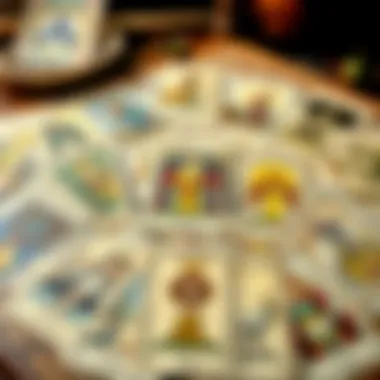
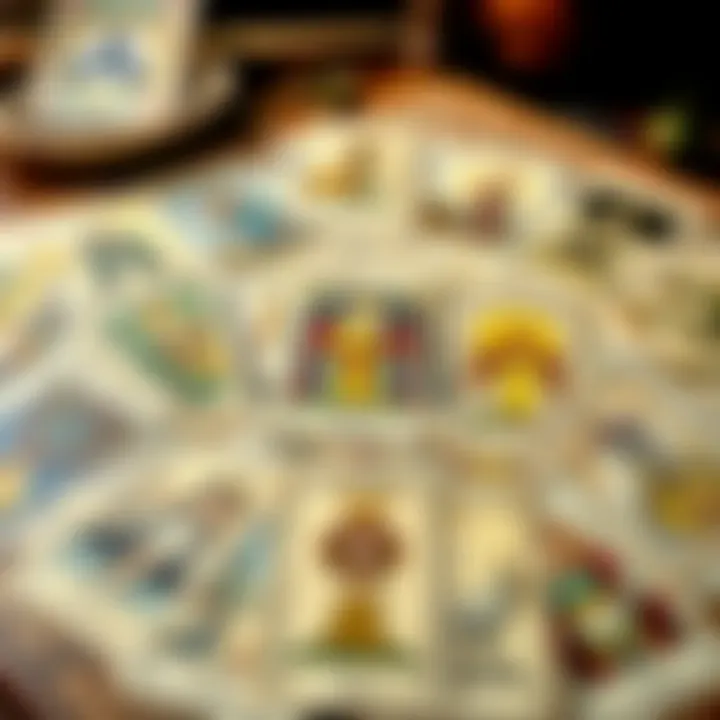
Intro
The exploration of tarot cards stretches across centuries, interpreting life’s mysteries through symbolic imagery and intuitive connections. While often linked to divination, tarot reveals itself as a profound tool for self-exploration and understanding. This article will peel back the layers of tarot, highlighting its rich history, immersive symbols, and practical uses, offering both seasoned practitioners and curious newcomers a foundational insight into this intricate practice.
Historically, tarot's roots lie in 15th-century Europe, with the earliest decks created as playing cards. Yet, it transformed into a mechanism of divination in the 18th century. Today, tarot embodies a blend of art and intuition, with each card offering unique meanings while inviting users to reflect on their personal journeys.
This guide aims to furnish you with an in-depth look at card meanings, effective reading techniques, and pathways to self-growth that tarot can foster. Mindful engagement with the cards can yield significant insights about one’s situation, past experiences, and future possibilities. Let’s embark on this adventure, unlocking the secrets within the tarot's embrace, where every spread not only tells a story but also echoes the reader’s innermost thoughts and feelings.
Join us as we embark on an enlightening discourse on tarot, sure to spark curiosity and reverence for this timeless practice.
The Origins of Tarot
Understanding the origins of tarot is like pulling back the layers of a well-worn tapestry. The threads of history and culture interweave to present a nuanced picture of what tarot symbolizes and how it has evolved. This foundation is critical, as it not only adds depth to the practice but also enriches the way readers engage with the cards.
Historical Context
In the early days, tarot cards were not the mystical tools we recognize today. Dating back to the 15th century, the earliest known tarot decks appeared in Italy, primarily as playing cards. These decks were crafted for leisurely games, making no mention of mystical practices or fortunetelling. The Visconti-Sforza tarot deck, for instance, commissioned by nobility, exemplifies the artistry found in these early cards, adorned with intricate imagery reflecting the social intricacies of the time.
The transformation from simple playing cards to divination tools began gradually. In the 18th century, with the rise of esoteric societies like the Rosicrucians and later the Hermetic Order of the Golden Dawn, tarot was infused with new significance and mystical interpretations. Tarot started to be viewed through a lens of symbolism and the archetypal journey of the hero, making it resonate deeply with both the individual and the collective unconscious. Studies have shown that the association with Kabbalah and astrology began during this surge of interest, aligning tarot with existing frameworks of metaphysical thought.
In many ways, this historical context sets the stage for understanding the tarot today, as it combines historical art form with modern spirituality. The cards serve as mirrors to our thoughts, fears, and aspirations, not merely tools for prediction but instruments of reflection and insight.
Evolution Through Time
As we trace the evolution of tarot, it becomes apparent that it is a living tradition. Each century brought new interpretations and styles, yet the essence has remained consistent. The 19th and 20th centuries saw an explosion of unique decks and methodologies. Artists like Pamela Colman Smith started to create decks that feature vivid illustrations, such as the iconic Rider-Waite-Smith deck, which is still widely used today.
Key Milestones in Tarot's Evolution:
- 18th Century: Emergence of tarot within esoteric traditions, leading to widespread adoption for spiritual and psychological insights.
- 19th Century: The Golden Dawn plays a pivotal role in the revival of tarot, linking it to Kabbalistic and astrological teachings.
- 20th Century: The opening of tarot to popular culture with decks designed for various themes and aesthetics, encouraging personal interpretation and creativity.
Tarot decks now come in various types, from traditional to modern interpretations that reflect contemporary issues and cultural motifs. This adaptability has allowed tarot to remain relevant across different cultures and eras. Each deck tells a story, not only of the individual artist or creator but also of the society in which it was produced.
Ultimately, exploring the origins of tarot provides a profound understanding of its significance beyond mere card readings. It reveals the layers of meaning and the profound psychological engagement that tarot can foster. Through time, what began as a form of entertainment evolved into a complex system of symbolism and self-exploration, a beacon guiding many along their personal journeys.
Understanding the Tarot Deck
Understanding the tarot deck is a cornerstone of effective tarot reading. Without a solid grasp of its structure and purpose, one might find themselves lost in a web of symbols and meanings. The tarot deck, with its intricate designs and layered meanings, is not merely a collection of cards. It's a tool; a mirror reflecting our past, present, and potential future. This section will delve deep into what comprises the deck, the significance of each card, and how they can serve as signposts in one’s personal journey.
Structure of the Deck
The tarot deck is typically composed of 78 cards, carefully categorized into two main groups: the Major Arcana and the Minor Arcana. This unique structure plays a vital role in how the cards are interpreted.
- Major Arcana: This subset consists of 22 cards, each one rich with symbolism and deep meaning. They often represent significant life events, themes, and the journey of the self. Cards like The Fool, The Lovers, and The Wheel of Fortune convey lessons that resonate on a universal level.
- Minor Arcana: The 56 cards in this group are further divided into four suits—Cups, Wands, Swords, and Pentacles—each embodying different aspects of life. These suits provide insights into our daily experiences, emotions, challenges, and material matters. Unlike the Major Arcana, the Minor cards often represent more mundane day-to-day happenings.
Interestingly, the arrangement and imagery in a tarot deck can vary significantly based on the artist’s interpretation. There’s no shortage of styles, from the traditional Rider-Waite to more contemporary decks featuring unique artwork and themes.
Understanding the structure is akin to learning the rules of a game before playing. It can inform the reader’s approach to interpreting the cards and realizing the interconnectedness between them.
Major and Minor Arcana
Major Arcana
The Major Arcana can be seen as the backbone of the tarot. Each card illustrates a profound archetypal experience.
- The Fool: Often regarded as a card of new beginnings and spontaneity, representing an invitation to embrace the unknown. The journey begins here.
- The Empress: Symbolizes fertility, abundance, and the nurturing aspects of life. A reflection of the fertile ground from which creativity blooms.
- Death: Contrary to its daunting name, this card signifies transformation and rebirth rather than physical termination. It embodies the cycles of life.
Minor Arcana
While the Major Arcana speaks to overarching themes, the Minor Arcana provides context and detail to the unfolding narrative of one’s life. Each suit essentially captures a distinct aspect:
- Cups: Connected with emotions and relationships, they delve into feelings, intuition, and connections with others.
- Wands: These cards are rooted in action, ambition, and creativity. They encourage taking steps towards one’s goals.
- Swords: Representing intellect and conflict, these cards can offer insights into mental struggles and challenges.
- Pentacles: This suit is tied to materialism and physical well-being, relating to finances, work, and the tangible world.
The interplay between the Major and Minor Arcana is dynamic. For instance, a reading that reveals both The Star (Major) along with the Two of Pentacles (Minor) could indicate a hopeful outlook amidst a bustling life, merging profound hope with practical concerns.
"In every card, the universe whispers secrets and challenges, waiting for you to decode its essence."
Having a robust understanding of both the structure and meanings enriches the reader's ability to connect with the deck. It transforms each session into a dialogue with oneself rather than just a passive observation of symbols. By comprehending the significance of each card, readers can navigate their personal landscape more effectively.
Symbolism in Tarot
In the realm of tarot, symbolism stands tall as the backbone of interpretation and understanding. Every card is not just a piece of art but a layered tapestry of meanings waiting to be unraveled. Recognizing the importance of symbolism allows practitioners to delve deeper into their readings, providing clarity and insights into situations that may seem elusive at first glance.
Symbolism encompasses a variety of elements, including imagery, colors, and numbers, each playing a vital role in conveying messages. The tarot deck transforms into a unique language, one where every image and hue speaks volumes. For both the novice and seasoned reader, understanding these symbols can enhance the reading experience by revealing hidden truths and surprising revelations.
Imagery and Its Meanings
Imagery in tarot is where the magic begins. Each card comes with its own unique artwork that reflects themes and messages. For instance, the Fool card, depicted often as a carefree wanderer with a small dog, symbolizes new beginnings and uncharted paths. The imagery is not arbitrary; it’s a carefully crafted representation of the human experience, tapping into universal archetypes that resonate across cultures.
Consider the Hanged Man, portrayed often as a figure suspended upside down. This imagery is rich with meaning— it can suggest a pause, a change in perspective, or the need for sacrifice. By observing these illustrations closely, readers can glean insights into their own personal situations and how they relate to the broader human narrative.
Understanding these visual cues can be likened to deciphering a personal code—each reading may reveal something new based on the context and the querent's question.
Colors and Numbers
Moving beyond imagery, colors are profound symbols in tarot as well. Each hue bears its own significance. For instance, red often embodies passion and action, while blue may symbolize calmness or introspection. Gold often signifies wealth and achievement, whereas black can evoke feelings of mystery or the unknown. When interpreting a card, the colors involved can drastically shift the reading’s tone. It’s essential to consider how the colors interact with one another on the card as well as their emotional undertones.
Numbers in tarot, too, are laden with meaning. For example, the number 1 symbolizes new beginnings, while 10 often signifies completion. The sequence of numbers offers a narrative arc. In the Major Arcana, for instance, we see a progression from the Fool (0) representing potential, to The World (21) representing fulfillment. Each number carries its frequency, influencing the interpretation of the cards and the overall reading.
In summary, diving into the world of symbolism in tarot opens a treasure trove of insights. Understanding imagery, colors, and numbers not only enriches the reading experience but also empowers individuals on their journey of self-discovery.
"The tarot serves as a mirror reflecting our own consciousness and potential."
By integrating these symbolic elements into readings, one can navigate the intricate tapestry of life with greater clarity and comprehension.
For deeper exploration, consider consulting resources such as Wikipedia or communities on Reddit for additional insights and discussions regarding the imagery and significances in tarot.
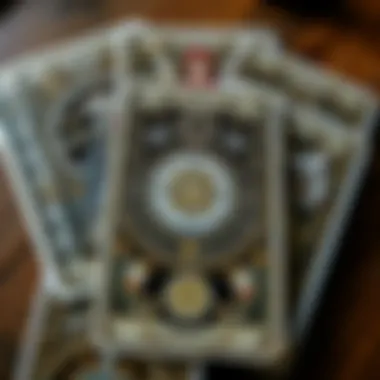
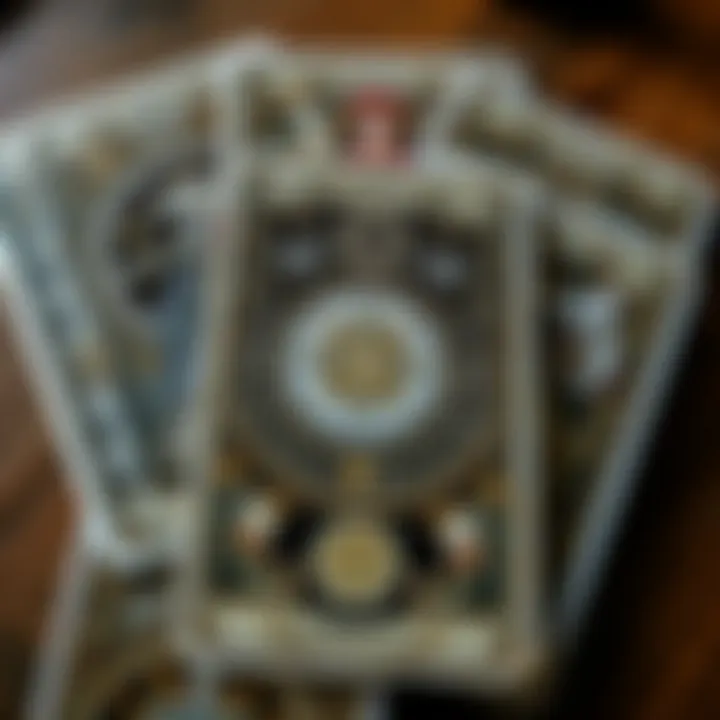
The Art of Reading Tarot
Reading tarot is an intricate practice that holds significant value for those seeking depth in self-understanding and decision-making. This section peels back the layers surrounding this ancient craft, revealing why mastering the art of reading tarot is not only beneficial for individual growth but also for connecting with others and fostering community.
At its core, reading tarot involves interpreting symbols and messages from the cards, providing insights that traditionally lie beneath the surface. The intuitive aspect of this practice encourages readers to trust their instincts, as each card not only carries inherent meanings but also resonates uniquely with the reader and the querent—the individual seeking guidance. This multifaceted approach emphasizes the importance of personal interpretation and situational context.
Preparing for a Reading
Before diving into a reading, setting the stage is key. Here’s a concise guide to prepare:
- Create a Sacred Space: Choose a quiet environment where you feel comfortable. This can be a designated altar or simply a cozy corner in your home.
- Clear Your Mind: Take a few moments to meditate or practice deep breathing. Cleansing your mind allows for clearer insights during the reading process.
- Gather Your Tools: Besides tarot cards, have a notebook or journal handy to jot down impressions and interpretations. You might also want to light a candle or burn incense to enhance the atmosphere.
Once you've prepared your environment, check your energy. Ensure that you're in a balanced emotional state, as your feelings can affect the reading. The more aligned you are, the more effective the session will be.
Different Reading Techniques
Various techniques exist for reading tarot, each with its own strengths and approaches:
- Single Card Draw: Perfect for quick insights or clarifying specific questions. Ideal for beginners.
- Three Card Spread: Typically represents Past, Present, Future. A versatile approach that provides a brief narrative on a situation.
- Celtic Cross: A more complex spread that offers holistic views on various aspects of life, including influences and obstacles.
Each technique can yield different results. Hence, one should choose according to the query's complexity and the reader's comfort level. The beauty of tarot is that the reader’s intuition will guide them in selecting the best approach for the situation.
Interpreting the Cards
Interpreting tarot cards is both an art and a skill. It is essential to familiarize yourself with both traditional meanings and your intuitive responses to each card. Here’s how to enhance your interpretation skills:
- Understand Symbolism: Every card is rich with imagery. For example, the imagery in The Fool can signify new beginnings and taking chances. Pay attention to details; colors and figures can hold personal significance.
- Context Matters: The meaning of a card may shift depending on its position in a spread and the question posed. Consider the dynamics between cards, as they can create a storyline.
- Use Intuition: Trust your gut feelings; they often reveal more than textbook meanings. When a card evokes a strong emotional response, take note.
"The cards are a dialogue between the subconscious and the conscious mind, where your intuition speaks louder than mere definitions."
In essence, effective interpretation is like piecing together a puzzle. You must merge symbols, personal intuition, and situational context to create a cohesive narrative that resonates with the querent's life.
As you practice reading tarot, be patient with yourself. Each reading is an opportunity for growth and understanding, both personally and for those you guide. Embrace the journey, recognizing that mastering the tarot is a lifelong path rich in learning.
The Role of Intuition in Tarot
Intuition holds a crucial place in the world of tarot reading. For many, tarot is not just a series of cards; it’s an intricate dance of energy, symbols, and feelings. The cards can often provide a roadmap, but it's the intuition that helps us navigate it. By relying on one’s gut feelings and innate understanding, a reader can tap into a deeper layer of meaning that statistics or logic may overlook.
Many aspiring readers often ask: How does one develop and use intuition when reading tarot? This exploration of intuition functions both as a bridge between the reader's knowledge of the cards and a deeper, more personal interaction with the querent’s questions.
Moreover, trusting one's gut can lead to breakthroughs that charm a reading with authenticity and connectedness. This section delves into how intuition plays into this multifaceted practice.
Trusting Gut Feelings
In tarot, gut feelings act like a compass. They allow readers to interpret the cards through personal insights and experiences. When a reader encounters a card, it often triggers a subtle nudge—a sensation that might lead them to specific meanings or connections not necessarily detailed in their tarot manuals.
Imagine pulling the Tower card. For one reader, it might spark thoughts of sudden change and upheaval. Meanwhile, another might feel it represents liberation from the past. This is where trusting gut feelings plays an essential role. It enables readers to cultivate unique interpretations that resonate with the querent’s situation.
Here are some important aspects to consider when trusting gut feelings in tarot:
- Listening To The Inner Voice: It’s vital to quiet the mind and allow instinct to take the floor. Meditative practices can sharpen this inner voice, creating a space where intuition can thrive.
- Validation Through Experience: Over time, validating one’s feelings through actual readings fosters confidence. Keeping a tarot journal can help track interpretations and outcomes, building a nuanced understanding.
- Emotional Connections: Emotions can guide interpretations. If a card pulls a memory or a strong feeling, it often signifies an area worthy of exploration.
Intuition is often viewed as an abstract concept, yet in tarot, it becomes a tangible asset.
Developing Intuitive Skills
While some may view intuition as an inherent trait, it can indeed be developed with practice. Just like walking a tightrope, the more one engages with their intuitive side, the steadier and more confident they become. Here’s how one might cultivate their intuitive skills while reading tarot:
- Engage with the Cards: Spend time with each card, beyond traditional meanings. Use artistic interpretations, mythologies, and personal insights to forge a deeper connection.
- Meditation and Visualization: Some practices, like meditation, can connect the reader to their inner self, fostering a deeper sense of clarity. Visualizing the querent’s situation during a reading can significantly enhance one’s intuitive responses.
- Practice, Practice, Practice: Regular practice can cement a reader’s intuition. Try readings for friends or family who can offer honest feedback on intuitive impressions. Create spaces for open-ended questions where intuition can thrive.
- Utilize Intuitive Tools: Some readers find practices such as pendulums, crystals, or dream work to enhance intuitive insights. By combining these tools with tarot readings, they deepen their approach and introduce variety into their practice.
- Reflect on Outcomes: Take time to ponder over past readings and the role intuition played. Recognition of patterns will lay the groundwork for further intuitive development.
- Create visual boards that represent the cards. Allow feelings to guide how you depict them artistically.
As the journey through tarot unfolds, the integration of intuition becomes evident. Tarot isn’t merely about the cards; it’s about the connection formed between the reader and the energies at play. By nurturing intuition, a reader can not just interpret cards but weave them into a tapestry of meaning that resonates with personal experiences and collective insights.
In summary, both trusting gut feelings and developing intuitive skills transform tarot reading into a comprehensive, layered experience that radiates wisdom and understanding.
Tarot and Personal Development
The connection between tarot and personal development is both profound and intricate. Many people perceive tarot primarily as a divination tool, yet its role transcends mere predictions. It serves as a mirror, reflecting the inner landscape of an individual’s mind and emotions. The process encourages honest self-examination, promoting growth and insight into one’s life journey. This section delves into two critical aspects: self-reflection through tarot and the importance of setting intentions.
Self-Reflection Through Tarot
Self-reflection can be a daunting task. It often necessitates confronting uncomfortable truths about ourselves. Tarot allows individuals to navigate these reflections through its rich imagery and archetypes, paving the way for self-awareness and comprehension. Each card can symbolize aspects of our personality, experiences, or unconscious motivations, leading to fruitful introspection.
When we engage with a tarot deck, we open a dialogue with our internal narratives. For instance, drawing the Hanged Man encourages contemplation on the necessity of surrender and redefining perspectives; it speaks to sacrifice and letting go. In contrast, the Empress can inspire thoughts about nurturing and abundance, inviting us to assess relationships and creativity in our lives.
In practical terms, an effective way to utilize tarot for self-reflection is through journaling after readings. Jotting down thoughts or feelings that arise during a reading can unveil deeper connections between cards and personal experiences. Additionally, considering questions like the following can enhance the reflective process:
- What themes are recurrent in my life right now?
- How does each card resonate with my present situation?
- In what ways can I embrace the messages of the cards?
This form of self-exploration fosters understanding and opens doors to transformation, making tarot a vital asset for personal development.
Setting Intentions
Setting intentions with tarot is about deliberately guiding one’s focus and energy toward specific outcomes. Clarity in intentions aligns actions with inner desires, creating a harmonious path for growth. Tarot can facilitate this process by helping to crystallize thoughts and aspirations.
For many practitioners, a ritualistic approach is beneficial. This can involve choosing a specific card that represents the intention or goal. For example, selecting the Star card may signify a wish for healing and hope, while the Chariot can represent determination and willpower. By visually anchoring goals to the imagery of the cards, individuals cultivate a clearer vision of what they wish to manifest.
The following steps can help in honing this practice of intention-setting:
- Clarify Your Intentions: Reflect on what you truly desire or wish to achieve.
- Select Corresponding Cards: Choose cards that embody the essence of your intentions.
- Create a Ritual: Formulate a simple ritual—lighting a candle, meditating, or even writing your intentions down alongside the selected cards.
- Revisit Regularly: Periodically reflect on the intentions set and assess progress, adapting as necessary.
Utilizing tarot in this manner not only empowers individuals but also deepens the connection they have with their personal journey.
"The tarot is a powerful ally when it comes to self-exploration; it unveils the shadows while illuminating the path ahead."
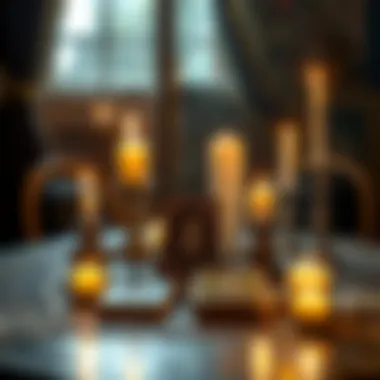
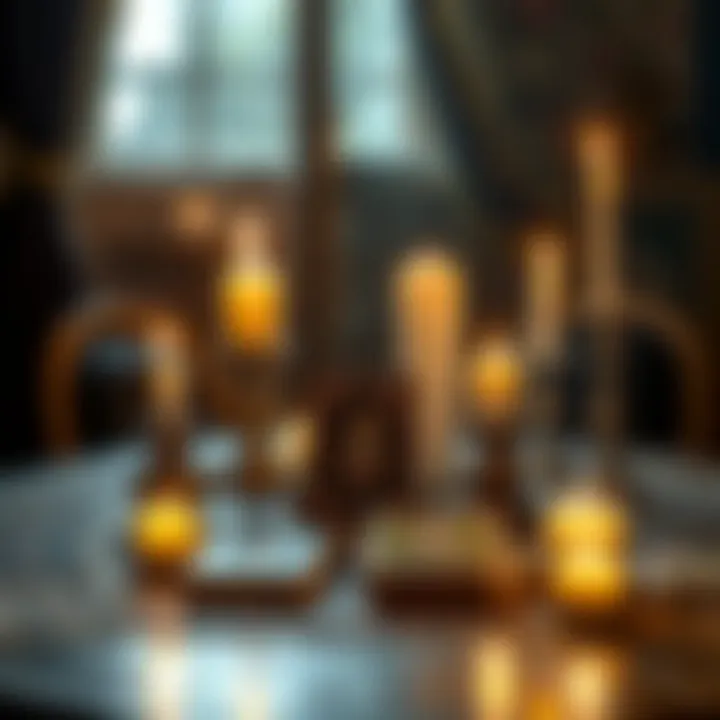
By integrating tarot into personal development practices, one can experience heightened awareness and intentional living, ultimately leading to a transformative journey toward self-actualization.
Common Misconceptions About Tarot
Understanding the misconceptions surrounding tarot is crucial for both practitioners and those merely curious. Many folks have preconceived ideas about tarot, often influenced by movies, popular culture, or anecdotes shared over coffee. Clearing these myths can pave the way for more profound insights into this rich practice, enhancing both appreciation and understanding among its practitioners and seekers.
Tarot as Fortune Telling
One of the most pervasive myths is that tarot cards are purely tools for fortune telling. This notion can be traced back to how celebrity psychics and dramatized media have portrayed tarot. While it is true that tarot can provide insights about future possibilities, framing it solely as a divination tool limits its potential. Tarot is about understanding the present and recognizing patterns that may influence future outcomes.
Instead of a crystal ball, think of tarot as a mirror reflecting your subconscious thoughts and emotions. Consider how the Six of Cups might suggest a reconciliation with your past, rather than foretelling an unavoidable event. Many practitioners recognize this richer dimension of tarot, utilizing it as a companion in their personal growth journey.
"Tarot doesn’t predict the future. It reveals what is already within you."
Benefits of Understanding Tarot Beyond Fortune Telling
- Self-Discovery: Tarot invites exploration of personal motivations, desires, and obstacles.
- Enhanced Decision-Making: By clarifying current situations, you can make more informed choices.
- Emotional Intelligence: Regularly interacting with tarot can elevate your understanding of emotions.
In this sense, viewing tarot through the lens of fortune telling stands as a disservice to what it can achieve. It’s not merely about what’s on the horizon; it’s about what you can do today.
Skepticism and Criticism
While there are enthusiastic supporters of tarot, criticism is also a significant part of its narrative. Many skeptics focus on the lack of empirical evidence supporting tarot's efficacy. They often dismiss it as mere entertainment, a collection of artistic cards devoid of real meaning or insight.
Skepticism, however, is a double-edged sword. On one hand, it can prompt deeper inquiry. On the other, it can discourage open-minded exploration. Individuals grounded in scientific rigor may overlook the introspective aspects that tarot can offer and, in doing so, might miss out on a valuable self-exploration tool.
It’s essential for both believers and skeptics to engage in dialogue. Constructive criticism can foster better understanding. For instance, someone may argue that tarot isn’t scientifically valid, while another might share how it helped them process grief or uncertainty. Such discussions can lead to occasional breakthroughs in thought.
Points to Consider About Criticism
- Personal Growth: Reflect on tarot's subjective approach to personal insights.
- Complementary Tool: Recognize tarot as one of many tools for self-discovery, not a definitive answer to life’s queries.
- Cultural Richness: Appreciate tarot’s historical connection and diverse representation across cultures, shaping its profound impact.
By examining these common misconceptions, it's easier to appreciate the true essence of tarot. Removing these barriers helps clarify not just what tarot is, but also what it could be—a pathway to greater self-awareness and understanding.
Cultural Perspectives on Tarot
Understanding tarot within various cultural contexts can provide a rich tapestry of insights and deepen one’s appreciation of this ancient practice. The importance of exploring these cultural perspectives lies in recognizing how unique beliefs and historical backgrounds shape interpretations and applications of the tarot in diverse settings. This section aims to shed light on these cultural lenses, highlighting the distinct meanings tarot holds across different societies and how modern adaptations have emerged from these traditions.
Tarot in Different Cultures
Tarot cards might have their origins rooted in Europe, yet their influence has transcended borders, finding resonance in a multitude of cultures. Each culture brings its own flavors and nuances to tarot, which not only reflect its local beliefs but also enrich the overall tapestry of tarot.
- Italian Influence: In Italy, tarot was originally played as a card game known as tarocchi. The imagery often incorporated local folklore and art styles unique to the Renaissance, making decks like the Visconti-Sforza notable. From a game to a divination tool, the transition reflects a cultural evolution, embracing spirituality alongside leisure.
- Egyptian Mysticism: Some believe that tarot had roots in ancient Egypt, tying back to mysticism and esoteric knowledge. Although scholarly evidence is sparse, this connection shapes a fascination that draws many to read the tarot through an Egyptian lens, focusing on the spiritual and philosophical implications of the major arcana, mirroring the journey of the soul.
- Eastern Adaptations: In places like India and Japan, tarot has melded with local philosophical systems such as Hinduism and Zen Buddhism. Indian tarot decks might feature familiar deities, emphasizing karma and dharma, while Japanese interpretations may align with concepts of balance and harmony that echo local spiritual practices. This blending opens doors for cross-cultural dialogue and understanding among practitioners worldwide.
Modern Adaptations and Variations
As societies evolve, so does tarot. The deck not only reflects the culture it springs from but also adapts to contemporary needs and ideas. Modern adaptations of tarot have diversified, appealing to a broader audience and often merging with popular spirituality and self-help practices.
- Themed Decks: Today, you can find tarot decks that cater to various fandoms and lifestyles—ranging from the artful aesthetic of fantasy depicted in a “Game of Thrones” deck to decks celebrating modern artists. This adaptability allows individuals to resonate with their personal passions while grounding them in the practice of tarot.
- Inclusivity: There has been a movement towards greater inclusivity within tarot communities. Decks intentionally designed to represent diverse identities—whether gender, ethnicity, or orientation—have gained traction. This shift encourages a deeper connection for many, making tarot a more personal and relevant tool for self-exploration.
- Technology’s Role: With the rise of technology, tarot readings have moved into the digital sphere. Apps and websites enable accessible divination practices, reaching individuals who may feel intimidated by traditional face-to-face readings or simply prefer the convenience of digital platforms. This shift not only showcases modern convenience but reflects changes in how younger generations engage with spirituality.
“Tarot is not merely a divination tool; it is a reflection of cultural beliefs shaped by history, art, and the collective consciousness.”
The exploration of cultural perspectives on tarot reveals how deeply intertwined the practice is with humanity’s diverse experiences. By understanding these contexts, one gains a more nuanced appreciation for tarot’s significance, transcending the mere act of reading cards to engage with a powerful form of introspection and cultural storytelling.
Tarot and Spirituality
The intersection of tarot and spirituality opens a fascinating avenue for exploration. This relationship goes beyond mere card reading or divination; it entwines the user’s personal journey with a larger quest for self-understanding and connection to the divine. Within this realm, tarot doesn't just act as a tool but evolves into a conduit through which practitioners can engage with their inner selves and discover profound insights.
Spirituality, often described as the search for meaning or a connection to something greater than oneself, finds a unique expression through tarot. When reading the cards, individuals may experience moments of clarity, intuition, and even transcendent understanding, which can guide them in their daily lives. Whether one views tarot as a mystical practice or a psychological tool, the impact on personal growth and spiritual development remains significant.
Connecting with Higher Self
One of the core benefits of engaging with tarot lies in its ability to facilitate a deeper connection to the higher self. This facet of spirituality emphasizes knowing yourself beyond societal definitions of identity and purpose. When conducting a tarot reading, it can be as if you are peeling back the layers of your own consciousness, allowing for self-discovery that feels almost magical.
During a reading, the chosen cards may resonate with life experiences, emotions, or thoughts long buried. This process can illuminate subconscious patterns, allowing individuals to approach their dilemmas or aspirations with newfound clarity. For astrological enthusiasts or spiritual seekers alike, connecting with the higher self through tarot can pave the way to transformative insights.
To strengthen this connection, consider setting intentions before each reading. For instance:
- Ask for Guidance: Frame open-ended questions that invite intuition, such as, "What must I understand more deeply about my current life path?"
- Focus on Personal Growth: Center your inquiry around personal development or emotional healing. This often brings deeper insights that transcend immediate concerns.
"Tarot serves as a mirror, reflecting not only our deepest questions but also the answers hidden within us."
Tarot in Meditation Practices
Incorporating tarot into meditation practices melds two powerful spiritual tools: introspection and visualization. Meditation itself can be a quiet sanctuary amidst the chaos of everyday life. When combined with tarot, it can help in accessing layers of understanding and awareness that often lay dormant.
To use tarot in meditation, one might select a card that resonates on a personal level and meditate on its imagery and symbolism. This simple act can reveal deeper meanings and messages.
- Selecting a Card: Intuitively choose a card from the deck that draws your gaze.
- Visual Focus: Spend several moments observing the card's imagery. What feelings arise? What thoughts or memories does it evoke?
- Contemplative Breathing: Allow your breath to flow naturally, letting thoughts drift away each exhale. Invite the card’s energy to guide your contemplation and seek messages or insights that may arise during this stillness.
- Reflect Post-Meditation: After your meditation, jot down any revelations or feelings experienced during the session. This practice not only reinforces the message received but allows for deeper exploration over time.
Ultimately, integrating tarot with meditation enhances one’s spiritual practice, offering pathways to understand complexities of the self and navigating life’s challenges. The synergy between these methods equips practitioners with a plethora of tools for inner growth and enlightenment.
In this manner, tarot transcends its traditional perception as merely a fortune-telling device. Instead, it weaves itself into the tapestry of personal spirituality, offering experiences that are rich in meaning and transformative potential.
Practical Applications of Tarot
Exploring the practical applications of tarot serves as a testament to its versatility beyond traditional readings. This section aims to highlight how tarot can integrate into decision-making processes and everyday life, offering both clarity and inspiration.
Using Tarot for Decision Making
Decision-making can often feel like walking down a long, winding road. The choices we face might seem straightforward at first glance, but more often than not, they come laden with uncertainties. This is where tarot steps in, acting as a compass, guiding one through the fog of indecision.
Tarot empowers individuals to engage with their thoughts and feelings deeply. By pulling cards that resonate with the situation at hand, one can visualize the pathways available. Each card, with its unique imagery and symbolism, can evoke distinct insights, pushing one to consider options they might otherwise overlook.
- Clarify Options: A simple three-card spread can illustrate the pros and cons of each choice. For instance, drawing the Two of Swords might suggest a situation requiring balance and careful consideration, nudging one to weigh their options against the inner voice that seeks clarity.
- Shine Light on Blind Spots: At times, we are our own worst enemies. Patterns of behavior or limiting beliefs can cloud our perspectives. The Ten of Wands, for instance, can indicate the weight of responsibilities holding one back, suggesting it might be time to let go of what no longer serves.
- Encourage Introspection: Tarot isn’t merely about prediction; it’s about reflection. When faced with a tough decision, a reading encourages a dialogue with the self. This fosters a deeper understanding of one’s desires and motivations.
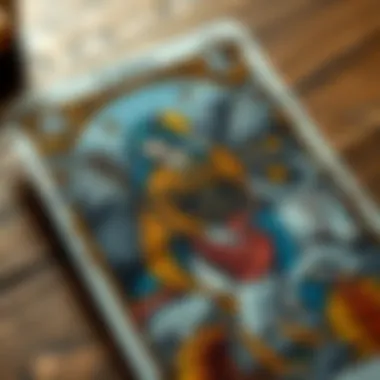
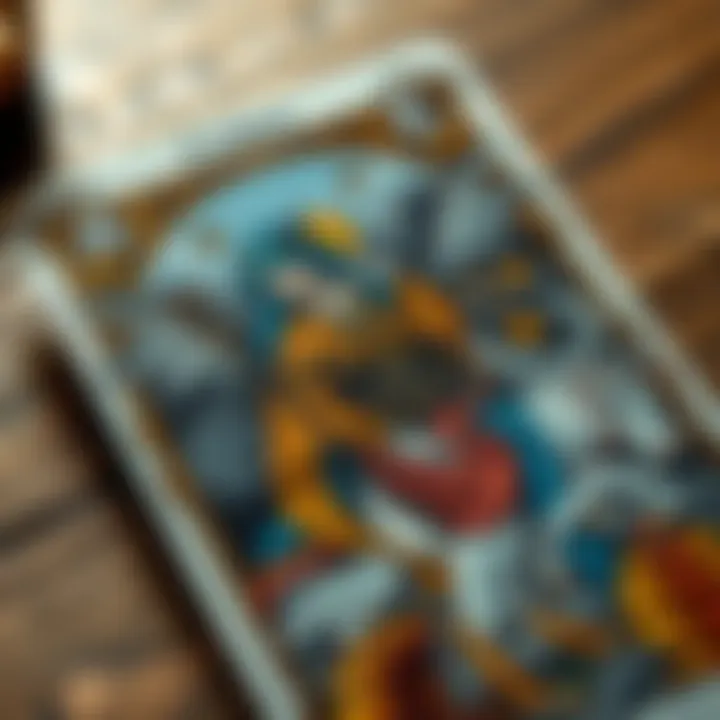
Incorporating tarot in decision-making invites a reflective process, shedding light on options while serving as an emotional anchor.
Incorporating Tarot into Daily Life
Integrating tarot into daily routines can infuse one’s life with insight and awareness. It’s not just about occasional readings but making tarot a part of everyday experiences. This practice allows for continuous engagement with the cards, leading to profound shifts in perspective.
- Daily Card Pull: Setting aside a few moments each morning to draw a single card can set the tone for the day. This habit cultivates mindfulness, prompting reflection on what the day may hold. For instance, drawing the Page of Cups might encourage openness to new emotional experiences.
- Journaling with Tarot: Keeping a tarot journal can be a powerful companion for self-exploration. Recording daily draws, reflections, and how the messages resonate with ongoing life experiences allows for tracing patterns over time.
- Meditation with Cards: Selecting a card to meditate on can deepen personal understanding. Focusing on the imagery and meanings can reveal insights that might not be immediately apparent, guiding one's energies through the day.
In essence, weaving tarot into everyday life transforms it into a regular source of inspiration and insight. It encourages not just a mystical connection but also a profound dialogue with oneself.
"Tarot is a mirror reflecting the inner depths of the human mind."
Through these practical applications, tarot emerges as a multifaceted tool for both personal growth and routine reflection. It isn’t merely about foretelling the future; rather, it’s about anchoring oneself in the present and navigating the various threads of life with intention and clarity.
An Ethical Approach to Tarot Reading
An ethical approach to tarot reading is crucial for cultivating trust and respect in the practitioner-client relationship. This aspect encourages a thoughtful and responsible practice, guiding readers to navigate the sometimes murky waters of tarot interpretation. At its core, ethics in tarot involves understanding the responsibilities that come with providing insights, as well as being mindful of the personal boundaries of clients.
Respecting Client Boundaries
Respecting client boundaries is an essential principle in ensuring a positive and safe tarot reading experience. Every person seeking a reading comes with their own story, fears, and expectations. It's the reader's job to honor these elements without crossing any lines that may cause discomfort or harm.
A tarot reader should take the time to establish what clients expect from their session. This often means addressing questions like:
- What specific issues would you like to discuss?
- What areas of your life are challenging you right now?
- Are there topics you prefer to avoid?
By keeping communication channels open, practitioners can create a dialogue that allows clients to voice their comfort zones. An ethical reader will gently steer the reading in a direction that respects these boundaries, even if it means facing undercurrents that might be sensitive or challenging. It is about maintaining professionalism alongside compassion and understanding.
Sensitive Topics and Appropriateness
Navigating sensitive topics requires a delicate hand. When addressing subjects such as health, relationships, or financial concerns, the reader must employ discretion and empathy. Tarot readings can occasionally uncover truths that people may not be ready or willing to confront, which puts the reader in a position of power.
Here are key considerations one ought to keep in mind when dealing with sensitive topics:
- Know Your Limits: Situations involving mental health or major life crises should often be approached with heightened respect. If a client requires specialized support, it may be better to suggest they speak with a qualified professional.
- Contextual Sensitivity: The manner in which questions are posed can impact how they are perceived. It's beneficial to approach topics gently, using language that invites reflection rather than prompting fear or anxiety.
- Empowerment Over Fear: Frame insights around empowerment rather than avoidance. Readers should encourage clients to view the cards as tools for understanding rather than signs of impending doom.
"Minding boundaries is not just about the tarot; it’s about honoring the human experience in all its complexities."
In essence, an ethical approach to tarot reading is beneficial for all involved. It not only protects the reader but also allows the client to explore their journey without feeling vulnerable. Practitioners who keep peace and integrity at their core will likely find their practice enriching and fulfilling.
Building a Tarot Community
Creating a supportive tarot community is akin to assembling a patchwork quilt, where each piece represents unique perspectives and experiences woven together to form a cohesive whole. The importance of building a tarot community cannot be overstated, especially given the rising interest in tarot as both a spiritual and practical tool in contemporary settings. By pooling knowledge and resources, tarot practitioners—whether seasoned or newcomers—can enhance their understanding of the cards and deepen their practices.
Sharing Experiences and Knowledge
Sharing experiences within the tarot community allows individuals to learn from one another's journeys. Each tarot reader brings to the table their own insights, interpretations, and stories of how the tarot has influenced their lives. Engaging in discussions about personal readings, favorite spreads, and interpretations of specific cards creates a richness in understanding that a solitary study cannot offer.
- Workshops and Meetups: Regular gatherings, whether virtual or in-person, can facilitate knowledge sharing. Workshops about different tarot traditions or specific reading techniques can bring members together to learn collaboratively.
- Journaling and Reflection: Encouraging community members to keep journals of their readings can foster deeper exploration. Sharing snapshots from these journals enables others to gain insights and inspire their own reflections.
"The tarot is not just about cards; it’s about the stories we tell and how they braid together to forge connection and insight."
Through these shared resources, community members also discover the diverse ways tarot can manifest in daily life—from aiding decision-making to promoting emotional wellness.
Online Forums and Resources
In the digital age, online platforms serve as powerful vehicles for building a tarot community. They provide virtual spaces where individuals can connect regardless of geographical barriers. These forums facilitate discussions, encourage debates, and foster communal learning—essentially acting as a melting pot of ideas.
- Reddit: Subreddits like r/tarot are bustling with users ready to dive into discussions about spreads, card meanings, and personal experiences. It’s a platform where a novice can ask a simple question and receive insights from seasoned tarot readers.
- Facebook Groups: Several groups cater to different interests within the tarot community, whether it’s focusing on specific decks or aligning readings with astrological insights. Here, members can share resources and collaborate on learning projects.
- Educational Websites: Websites such as tarotschool.com offer structured courses that can further enhance understanding and are often frequented by community members in pursuit of deeper knowledge.
These online resources not only democratize access to tarot but also encourage participation without fear of judgment, making it easier for individuals to express their insights and questions within a nurturing environment.
Further Exploration of Tarot
The exploration of tarot does not end at a mere understanding of cards or reading them for oneself or others. This journey delves into the deeper realms of knowledge, encompassing various resources and opportunities to enhance one’s practice. The importance of thoroughly examining these avenues is manifold. First and foremost, the world of tarot is ever-evolving, influenced by cultural shifts, modern interpretations, and technological innovations. By engaging with new materials and formats, practitioners can keep their skills sharp and perspectives fresh.
Books and Resources
Books covering tarot can range from beginner-friendly guides to highly specialized texts. Each offers a unique lens through which to understand the cards and their interpretations. Some notable books include:
- "The Ultimate Guide to Tarot" by Liz Dean – A comprehensive resource that combines practical advice with insightful interpretations.
- "Seventy-Eight Degrees of Wisdom" by Rachel Pollack – This classic explores the philosophical and psychological aspects of each card, perfect for those seeking depth.
- "Tarot for Your Self" by Mary K. Greer – Focused on using tarot for personal growth, offering exercises that can transform the reader's relationship with the cards.
In addition to books, there are numerous online resources that can further aid both novice and seasoned tarologists. For instance, websites like Biddy Tarot provide a wealth of information, including card meanings, spreads, and even community forums. Furthermore, online academic resources, such as those found on JSTOR, can offer scholarly perspectives on tarot's historical significance.
Workshops and Online Courses
Engaging in workshops and online courses presents opportunities for immersive learning. Many experienced tarot readers and educators hold workshops that cover various topics—from basic readings to advanced psychological interpretations of the cards. Participating in these can bring about:
- Hands-on Experience: Taking part in live readings can enhance skills and confidence.
- Community Interaction: Engaging with fellow learners can bring fresh perspectives and foster connections with like-minded individuals.
- Personal Guidance: Often, these workshops allow access to one-on-one advice from seasoned practitioners.
Online platforms like Udemy and The Learning Tarot offer courses that one can engage with at their own pace. These resources typically include video lectures, practice exercises, and a means to interact with instructors. For the more ambitious, joining an intensive weekend retreat can provide an in-depth experience that might be hard to replicate in a standard community setting.
"Learning is not attained by chance, it must be sought for with ardor and attended to with diligence."
The journey of further exploring tarot is rich and varied. It invites seekers to continually learn, adapt, and expand their understanding of this profound practice. By utilizing available resources and interacting with like-minded individuals through workshops or courses, one can truly unlock the deeper secrets of tarot.
End: The Path of Tarot Exploration
As we draw this exploration of tarot to a close, it's imperative to reflect on the intricate tapestry woven throughout the various elements we’ve discussed. The significance of tarot goes beyond mere card readings; it morphs into a tool for self-exploration and personal development. Understanding tarot leads to insights not only about life's enigmas but also about oneself. Each card serves as a mirror, reflecting the innermost fears, dreams, and aspirations residing in the reader.
The journey through tarot can be seen as an invitation to look inward. Each reading goes hand-in-hand with heightened awareness, fostering a deeper understanding of one’s choices and paths. Readers and querents alike often find that the cards act as catalysts for conversations they may have otherwise sidestepped, sparking realizations and new perspectives. The cards don't dictate fate; they illuminate potentials and possibilities, pushing one toward a clearer understanding of their own narrative.
"Tarot is not only a tool for divination; it’s a compass, guiding us through the often murky waters of our life’s journey".
In this article, we have peeled back the layers of tarot, moving from its ancient roots to modern interpretations. We’ve seen how the deck’s structure comprises the Major and Minor Arcana, each card rich with meaning and symbolism. The intricate details, such as imagery, colors, and numbers, create a rich language that allows readers to unlock personal insights.
Moreover, the role of intuition in tarot cannot be overstated. Developing one’s intuitive skills opens a path to deeper understanding. It’s about trusting those gut feelings and allowing them to guide the interpretation of the cards, which ultimately leads to profound self-reflection.
Summarizing Key Insights
- Tarot as a Reflection Tool: Each card serves as a reflection of the querent's psyche, helping them navigate personal challenges.
- Historical and Cultural Contexts: Tarot's evolution provides a rich backdrop, showcasing its adaptability through cultures and eras, from mystic origins to contemporary self-help usage.
- Versatile Applications: Tarot’s practical use spans decision making, personal insight, and daily life integration, demonstrating its utility beyond spiritual realms.
- The Ethical Reader: A clear ethical understanding enhances the practice of tarot, ensuring respect for client boundaries and appropriateness when dealing with sensitive topics.
- Community and Shared Knowledge: The wealth of resources—from workshops to online forums—fosters a vibrant community, encouraging shared learning and collective exploration of tarot.



